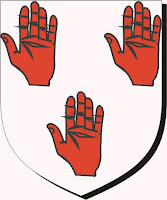Mystery spoon and goodbye!
Goodbye from us!
We encountered an old silver
spoon in the archives just before we went on study leave. Donated by former
pupil, Maria Thompson, we could make out the engraving ‘Baupaume’
and a crest, which looked more than familiar.
 |
| The spoon in its case |
We did not know the significance
or meaning behind this spoon; it was a mystery and yet to be solved. Where was
Baupaume? Why did it have the Maynard Crest but in reverse (i.e. three right
hands as opposed to three right hands of our crest)? And how did it end up in
the archives?
 |
| A familiar crest in reverse... |
 |
| The inscription 'Baupaume' |
Google revealed that Baupaume is
a small town in Northern France, located between Amiens and Arras, names
familiar to us from textbooks on the Western Front.
 |
| Map of Baupaume |
 |
| Baupaume today |
 |
| Allied Troops in Baupaume, 1917 |
 |
| Ruins of Baupaume, March 1918 |
After further investigation, we
discovered that the spoon is part of a commemoration towards this battle. Hundreds
of spoons were made as souvenirs to commemorate such battles, with town and
regimental crests at the top. Some of these spoons were made from melted down
artillery canons and other wartime memorabilia.
 |
| Similar commemoration spoons |
Ellie, Erin and Georgina
And goodbye from me
Where have the last two years gone? It does not seem like
two seconds since I met Mary Ellis for the first time to discuss the
possibility of setting up this project over a cup of tea.
Whether you be pupil, parent, teacher or alumnae, have a
wonderful summer!
Mrs Flavelle


















